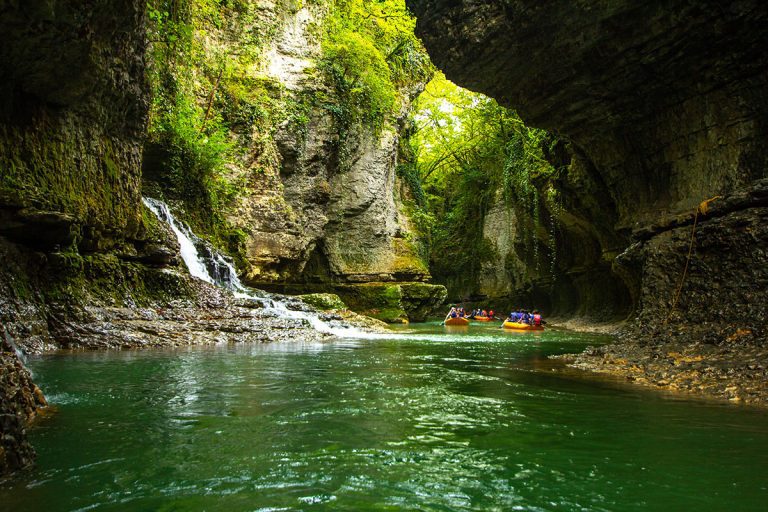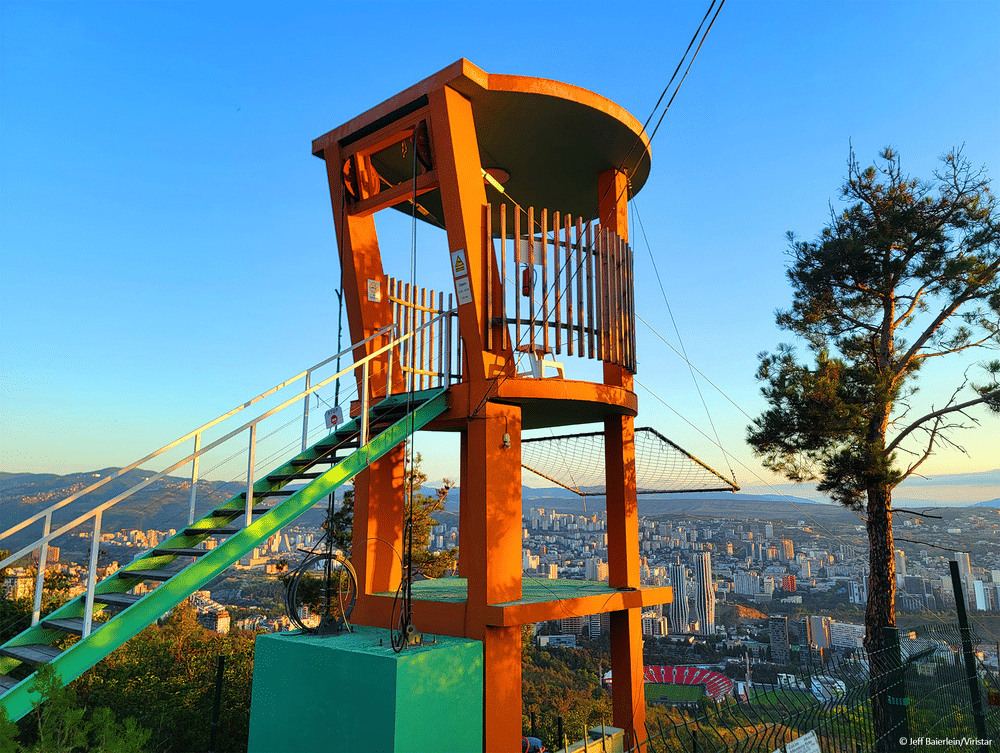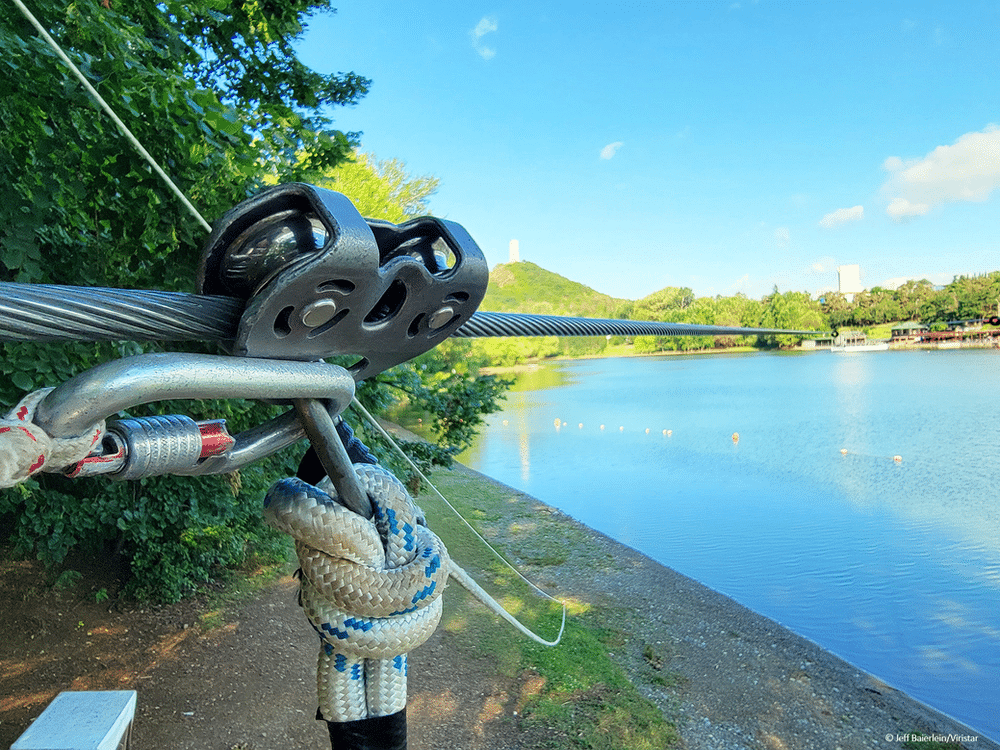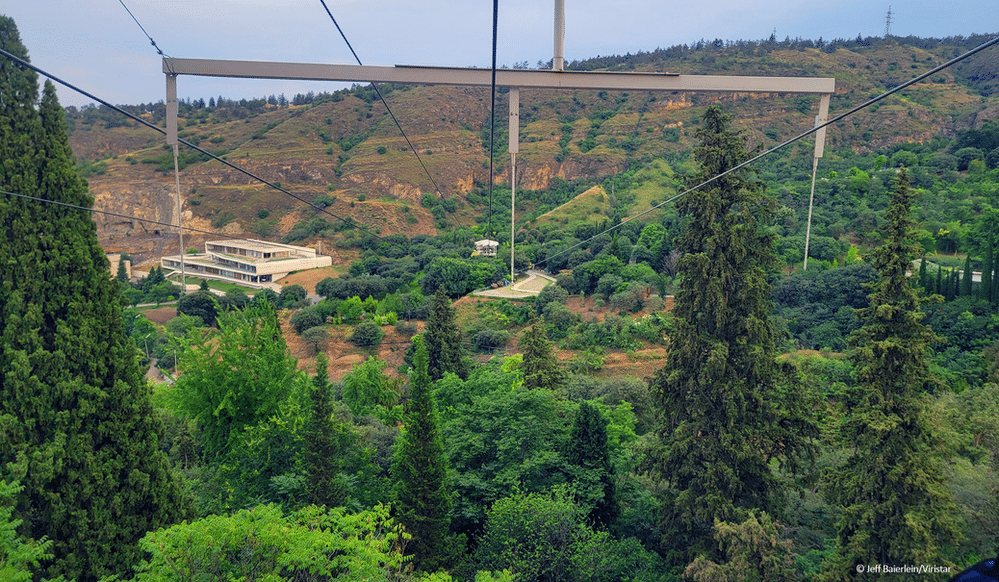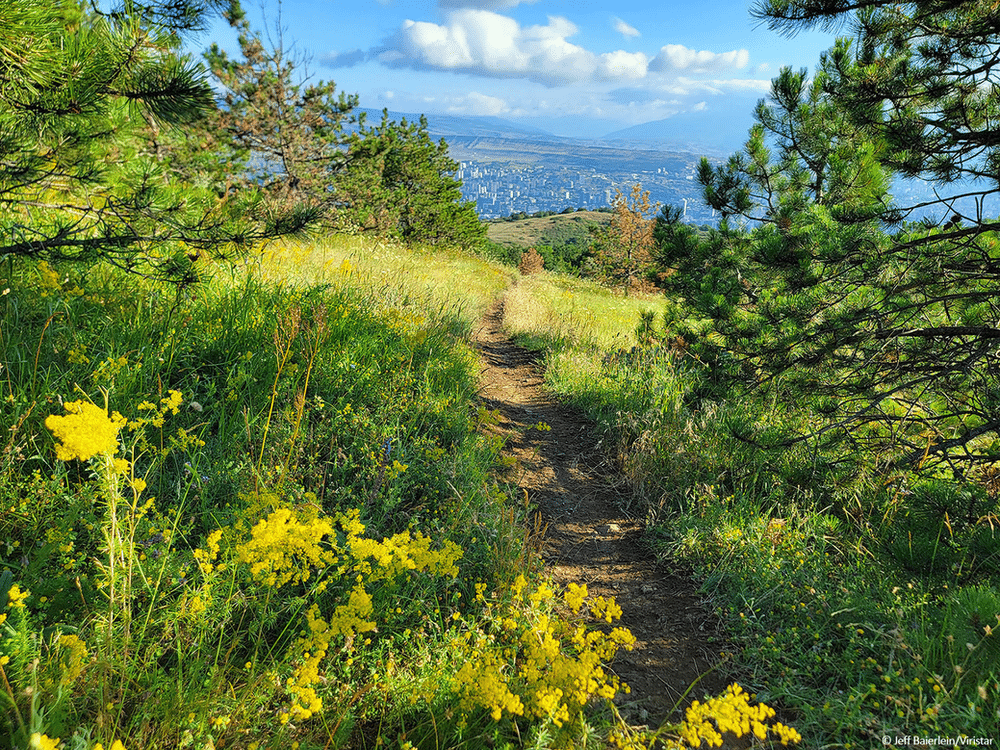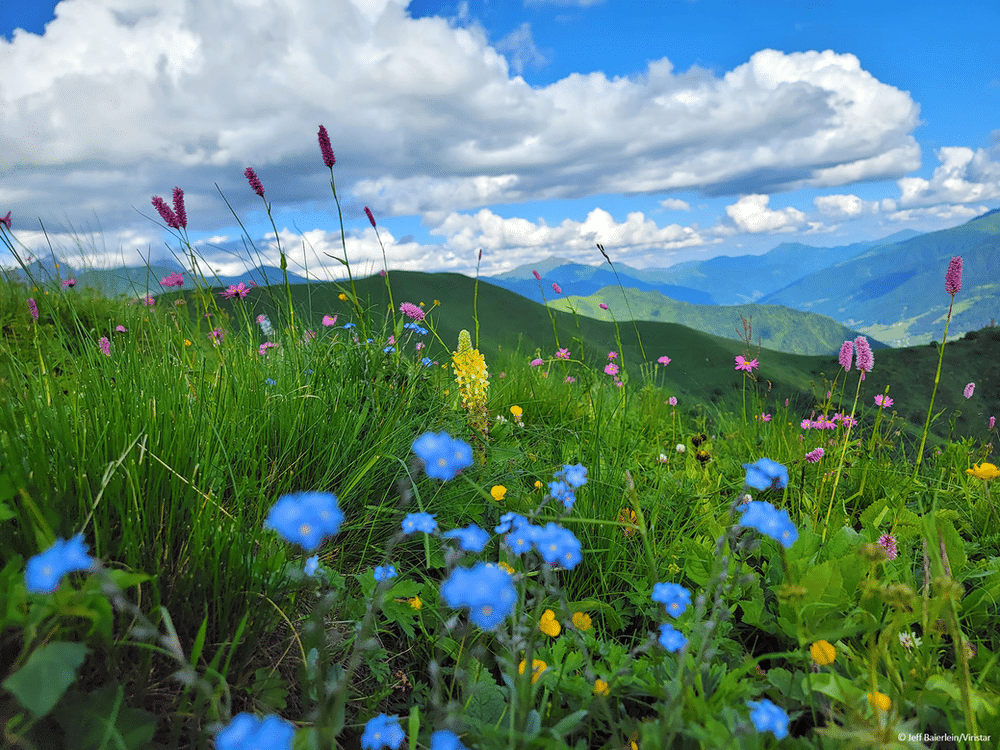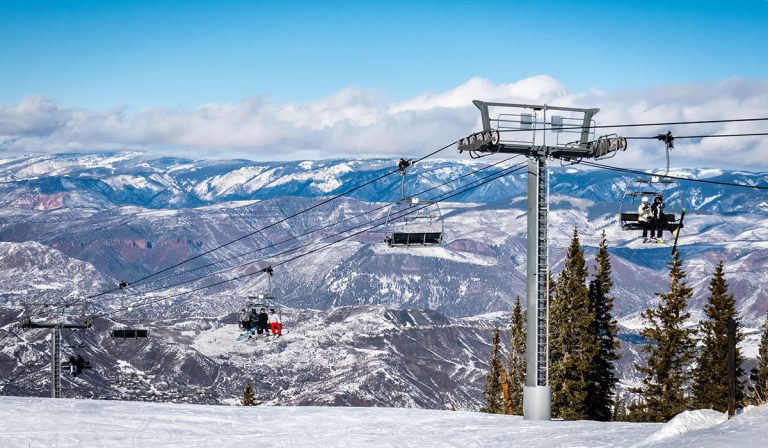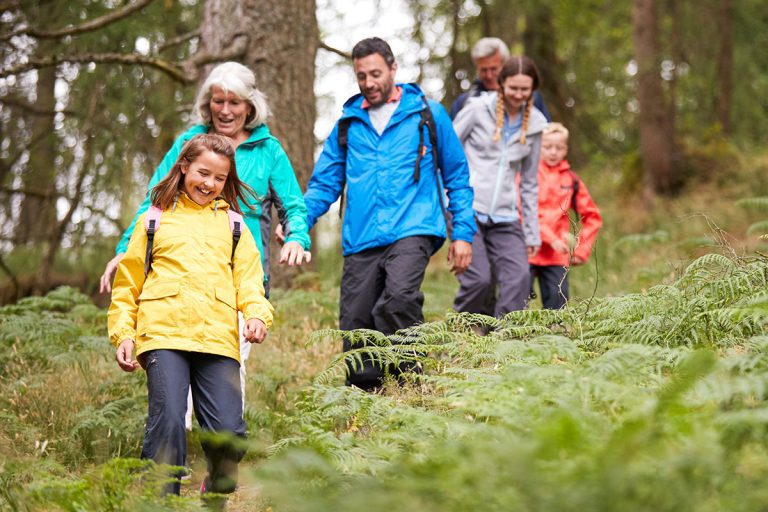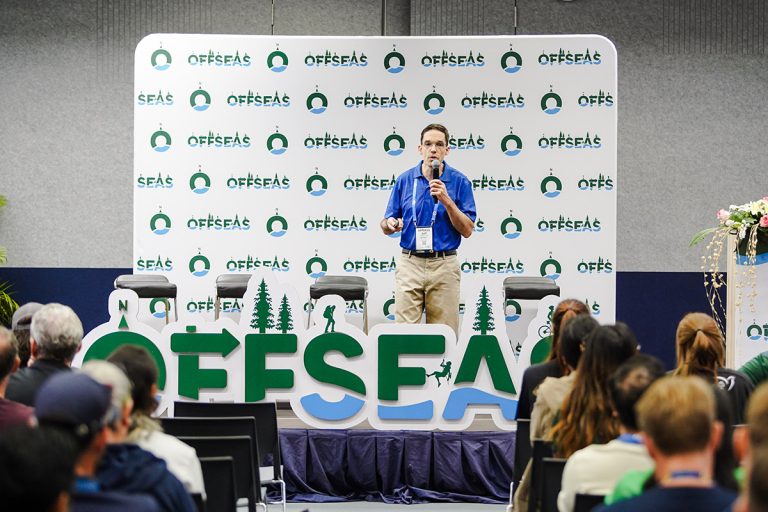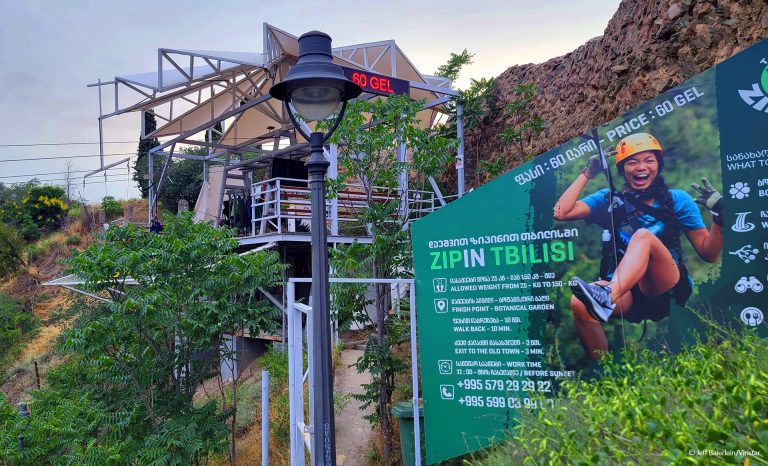
Ziplines are a growing business in Georgia, an eastern European country rich in adventure opportunities.
Long known as a mountaineering, skiing and whitewater rafting destination due to its snow-capped mountains and alpine rivers, Georgia is expanding its adventure tourism industry as a means of sustainable economic development.
The nation of some 3.7 million inhabitants has around 20 ziplines, in a territory slightly larger than West Virginia USA, with more on the way.
“Ziplines are very new,” says Goga Merkviladze, one of the leading zipline industry representatives in Georgia, “unlike skiing.”
But Goga and his colleagues in the Zipline National Federation are busy with plans to build more ziplines and other aerial adventures, including an aerial roller coaster-zip line in Martvili Canyon, the site of one of Georgia’s national parks.
One of Georgia’s—and Europe’s—longest ziplines is the 1200-meter zipline running from Turtle Lake, in the wooded hills above Tbilisi, to Vake Park, the verdant gem of the city’s downtown.
Another shorter zipline runs across Turtle Lake itself, a bucolic destination in the forested hills above Tbilisi, featuring walking paths, swimming, boating and a network of hiking trails, and, in the winter, ice skating.
Many adventure-seekers visiting Georgia come from Israel or are expats from the United Arab Emirates. But locals and tourists from all over the world come to Georgia for outdoor adventure and cultural experiences.
Georgia’s capital city, Tbilisi, is famed for its picturesque Old Town, with winding cobblestone streets under a fifth-century fortress.
A zipline runs from the fortress some 270 meters across Tbilisi’s National Botanical Garden, thought to have been established as royal gardens in 1625. The zipline ends near the torii-gated Japanese garden section, providing a dramatic entrance to the site, which also has cliffs used for rock climbing.
Viristar was approached to support development of the adventure tourism industry in Georgia, and Viristar’s director has been working with government and private sector representatives to establish adventure tourism safety legislation for the country.
Viristar’s Director recently discussed with Giorgi Chinchaladze, the chair of the Zipline National Federation, the introduction of a national standard for zipline installation and operation. The foundation of the safety standard could be the European Norm 15567 regarding ropes courses and related structures.
This is composed of two parts: EN 15567-1 – Sports and recreational facilities – Ropes courses – Part 1: Construction and safety requirements (includes Amendment A1:2020), and EN 15567-2:2015 – Sports- and recreational facilities – Ropes courses – Part 2: Operation requirements.
EN 15567 is approved by the European Committee for Standardization (CEN), making it a better choice for Georgia than standards published by the American National Standards Institute (ANSI) by the Association for Challenge Course Technology or others, as Georgia seeks to become part of the European Union.
If EN 15567 is introduced as a compulsory standard, then issues of education, training, and especially compliance will need to be addressed.
Members of the Zipline National Federation have been hard at work increasing safety practices for ziplines and challenge course operations across the country.
Recently, the Federation was successful in establishing a requirement that municipalities interested to build a zipline must get approval from the Federation before commencing construction, to help ensure that appropriate installation practices are followed.
Training of zipline facilitators/instructors is an issue Federation members are addressing. Goga recently installed cameras to help ensure that facilitators are following appropriate procedures.
Goga also introduced safety nets below the launch platforms of all his ziplines, and has been advocating for safety requirements regarding zipline braking systems, maximum operating speeds, and managing issues of participant weight.
Opportunities to increase the consistent application of high safety standards across the zipline, challenge course, canopy tour and aerial adventure park industry in Georgia and across the Caucasus region exist. Helmet use, which is typical for ziplines, is not always required, nor are close-toed shoes or a medical assessment.
Singapore is a global leader in zipline safety, with new requirements following a challenge course incident there. While most countries don’t have as strict heights-based activity safety requirements as Singapore has, Georgia’s risk management standards across a variety of high-risk adventure activities are expected to improve in upcoming years.
Ziplines One of Multiple Adventure Options
Georgia’s diverse landscapes range from flower-strewn alpine meadows and Red Sea beaches to subtropical woodlands and the world’s deepest cave—the 2,212 meter deep Verëvkina (Veryovkina) cave in Georgia’s Western Caucasus.
The country’s wide range of environments make it well-suited for a variety of outdoor adventure activities. Challenge courses, whitewater rafting, horseback riding, mountaineering, hiking, and skiing opportunities exist in close proximity.
